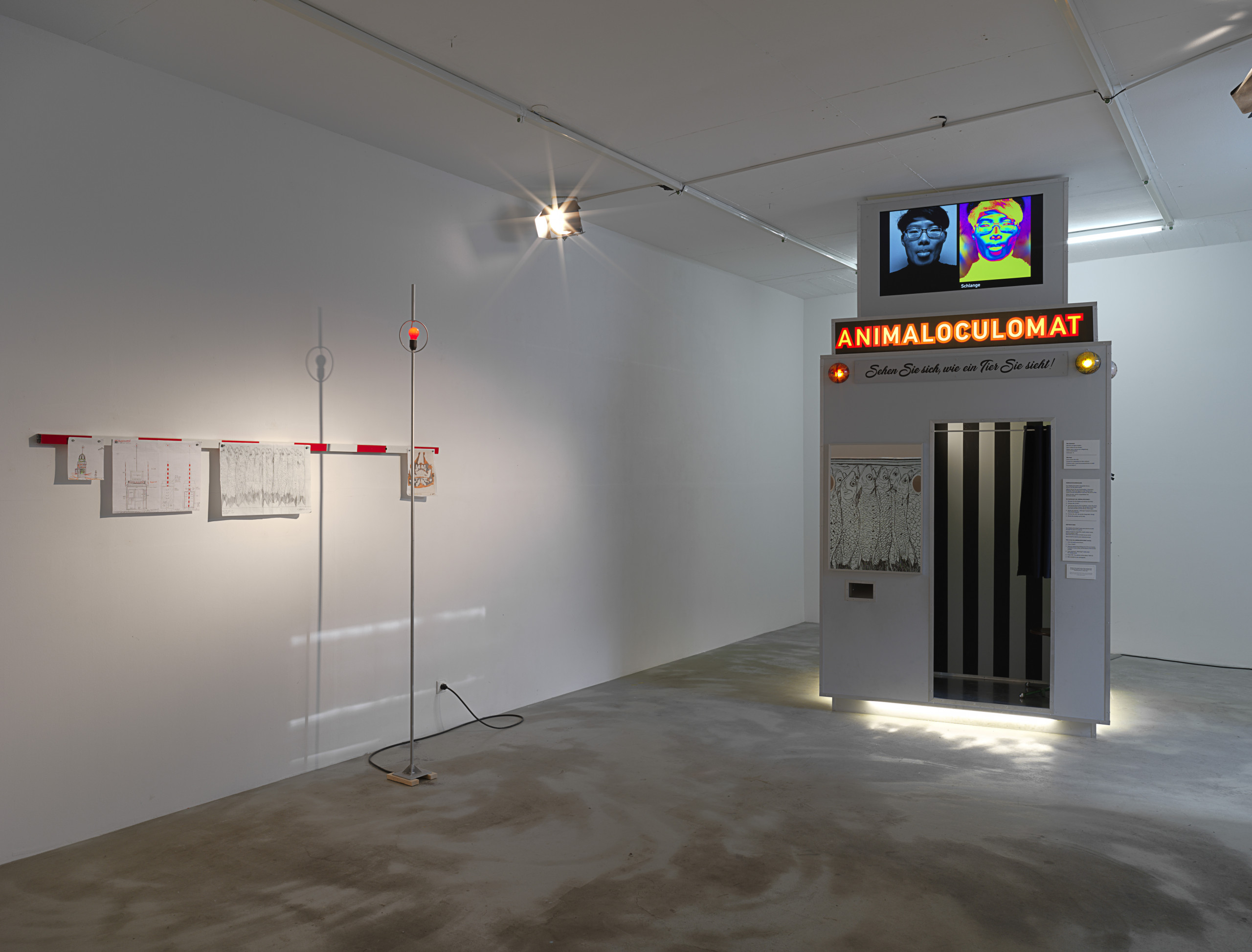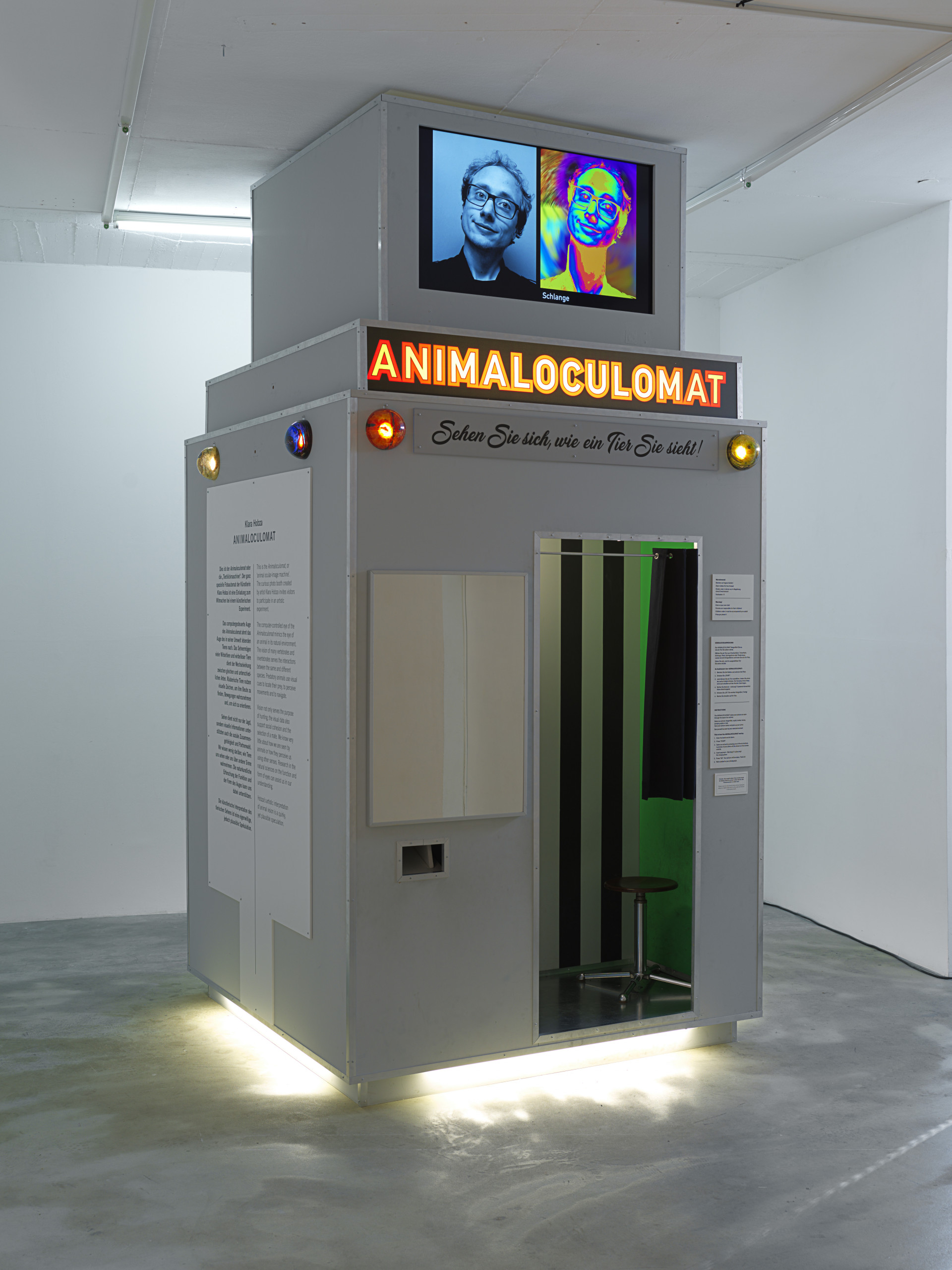Klara Hobza • Animaloculomataurus • 02.02.–07.04.2018
There are aspects of reality that escape the human eye. This year, astrophysicists are creating a ‘virtual earth-sized telescope’ – turning our planet, if you will, into a giant eyeball. The Event Horizon Telescope will make it possible for mankind to see a black hole, for the first time in human history. But we don’t have to go as far as outer space in order to point to blind spots of the human eye. Honeybees sense the earth’s electromagnetic field and are able to detect electric signals emitted by flowers, which is also why cell phone radiation propels the decline of bee populations all over the world.
“Sehen Sie sich, wie ein Tier Sie sieht! (See yourself through the eyes of an animal!)”. Klara Hobza’s Animaloculomat – the central piece of the exhibition – touts its services with a catchy slogan, written in twirly italics. The artist’s sturdy photo booth resembles a relic from a pre digital age, when the latter was more than just a default Apple application. Modelled on a device once common in urban space, Hobza’s photo booth is pimped up with auspiciously blinking lights. The whimsical machine exudes a left-handed charm, somewhere between a Jean Tinguely sculpture and a rickety time machine from 1960s Sci-Fi movie. You may select between snake, bat, spider, horse, dragon fish, and octopus. Close the curtain, insert one Euro, and – flash! – out drops a printed photo portrait of a very different kind.
What does a human look like, if seen through eyes, which are able to perceive infrared light (snake), ultra violet (spider), or if we were floating around with eight arms and no spine? In the case of animal vision, we will always stumble over one particular paradox: Every visual illustration will itself always be predetermined by the limits of human perception. In the context of scientific research, art traditionally comes in where science ends: Whenever complex, or insufficient scientific data make it hard to picture things, ‘artist’s visualisations’ come in. Hobza understands imagination as a human capacity that enables us to articulate the yet unknown. With regard to animal vision, the artist’s method of filling the scientific blanks could be called ‘imagination put into practice’ and ‘experimental empathy’. (Note: For an artist, who embarked on a thirty-year dive through Europe – and virtually turned into an aquatic creature – this is more than just an empty claim).
Given the self(ie)-centered loneliness caused by contemporary digital culture, Klara Hobza’s Animaloculomat interrupts this closed feedback loop. Instead, she asks us to explore different ways of seeing that go beyond anthropocentric blindness. We are, after all, animals too.












